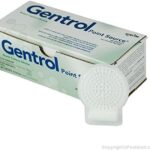Feeling tired and weak all the time? You might have anemia. Anemia happens when you don’t have enough red blood cells to carry oxygen through your body. This can make you feel exhausted, short of breath, and pale.
One of the best ways to fix anemia is by making sure you’re getting enough iron. Iron helps your body make more red blood cells, which carry oxygen. You can find iron in foods like red meat, beans, and spinach. Sometimes, taking iron supplements can also help.
Besides iron, other vitamins like B12 and folic acid are important too. These help your body produce red blood cells. Eating a balanced diet with plenty of fruits and vegetables can give you all these nutrients to keep you feeling strong and energetic.
Understanding Anemia and Its Causes
Anemia happens when there aren’t enough healthy red blood cells to carry oxygen. This can make people feel tired and weak.
Different Types of Anemia
There are many types of anemia. Iron deficiency anemia is the most common. Vitamin deficiency anemia can happen when the body lacks vitamins like B12 and folate.
Chronic disease anemia happens with illnesses like cancer or HIV. Bone marrow disease can also cause anemia. Hemolytic anemias destroy red blood cells faster than they are made.
Sickle cell anemia and thalassemia are inherited forms that change the shape and function of red blood cells.
Common Causes of Anemia
Bleeding is a major cause of anemia. It can result from heavy menstruation, ulcers, or injury. Pregnancy can also cause it due to increased blood demand.
A diet low in iron, vitamin B12, or folate can lead to anemia. Stomach or intestinal disorders might affect how nutrients are absorbed, causing a lack.
Medical conditions like kidney disease can slow down red blood cell production. Certain medicines can also hurt the production of these cells.
Anemia Risk Factors
Age is a risk factor, with older people being more likely to have anemia. Women of childbearing age are at risk due to menstruation. Infants and children can also be affected due to growth needs.
People with chronic diseases such as diabetes or cancer are at higher risk. Having a family history of inherited blood disorders can increase the likelihood of anemia.
Poor diet and lack of access to nutritious food can also heighten the risk. Regular blood donors might experience anemia if their iron levels are too low.
Diagnosis, Treatment, and Management
Anemia involves identifying its cause, treating it with various methods, and making lifestyle changes to manage and prevent it.
Diagnosing Anemia
Doctors diagnose anemia by reviewing medical history and doing physical exams. Blood tests like the Complete Blood Count (CBC) measure red blood cells. Additional tests such as hematocrit and hemoglobin levels help confirm anemia. Hematocrit measures how much of the blood volume is made up of red blood cells, while hemoglobin measures the oxygen-carrying protein in the blood.
Treatment Options for Anemia
Treating anemia depends on its cause. For iron deficiency anemia, patients often take iron supplements. Vitamin B12 supplements or shots help with vitamin B12 deficiency anemia. In some cases, blood transfusions or a bone marrow transplant are needed. If the anemia is due to chronic disease, specific medications might be required. Chemotherapy is used if the anemia is related to cancer.
Dietary Considerations and Supplements
Eating foods rich in iron can help manage anemia. Iron-rich foods include meat, seafood, beans, and nuts. Heme iron from meat is absorbed better than non-heme iron from plants. Consuming vitamin C rich foods like citrus fruits can increase iron absorption. Avoid drinking tea with meals as it can reduce iron absorption. Dairy products, which are high in calcium, should also be limited as calcium can interfere with iron absorption.
Managing and Preventing Anemia
Managing anemia involves regular check-ups and sticking to a treatment plan. Taking prescribed supplements, eating a balanced diet rich in iron, and avoiding foods that hinder iron absorption are key. Regular blood tests can help track progress. Ultrasound or endoscopy may be needed to find hidden sources of blood loss. Working closely with a healthcare provider ensures the condition is under control.
Frequently Asked Questions
This section will address common questions about treating anemia, its causes, symptoms, and available treatments and medications.
What are common ways to treat anemia?
Common treatments include taking iron supplements and eating iron-rich foods. Foods like red meat, beans, and leafy greens are good sources of iron. Sometimes doctors may recommend vitamin C to help the body absorb iron better.
Can anemia be fully cured?
Yes, anemia can often be cured. The cure depends on the cause. If anemia is due to a lack of iron, taking supplements and changing your diet can help. Some types of anemia may need ongoing treatment.
What are the primary causes of anemia?
Anemia often happens due to blood loss or not making enough red blood cells. It can also occur if the body destroys red blood cells faster than it can make new ones. Iron deficiency is a common cause.
What are the common symptoms of anemia in women?
Symptoms in women can include feeling very tired, looking pale, and feeling weak. They may also have shortness of breath, headaches, or dizziness. Heavy periods or pregnancy can increase the risk.
Which medications are typically prescribed for anemia?
Doctors often prescribe iron supplements. In some cases, they might also recommend vitamin B12 or folic acid. More severe cases might need medication to help the body produce more red blood cells.
Are there immediate treatments available for anemia?
Immediate treatments can include iron supplements or even iron given through an IV in a hospital. Blood transfusions are another option for severe cases. These treatments help quickly raise red blood cell levels.







